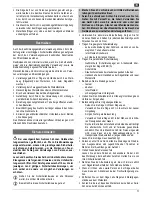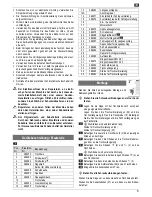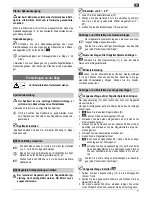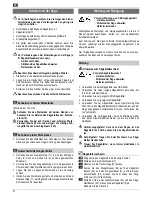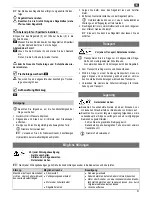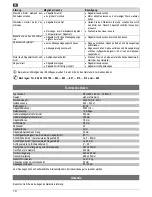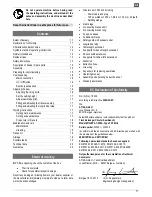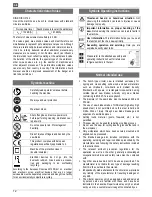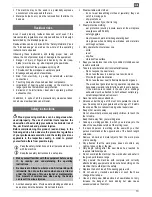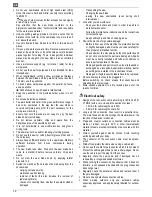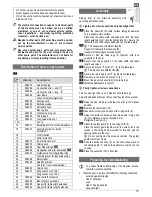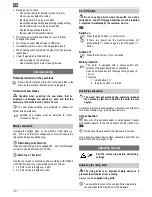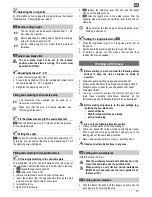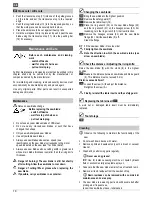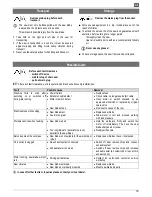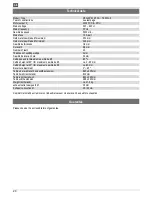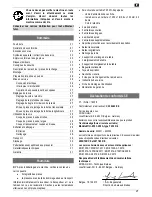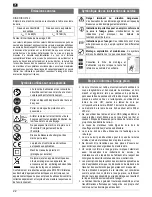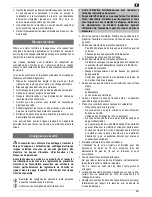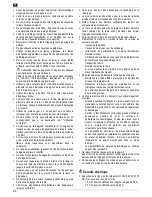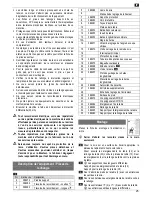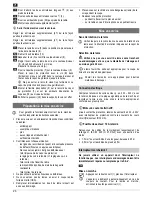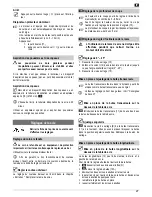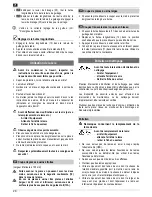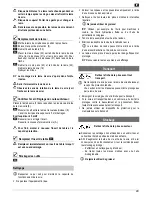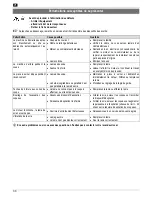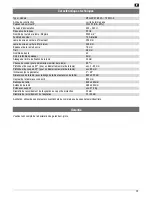
17
Adjusting the riving knife
For information on how to adjust the riving knife see the chapter
"Maintenance ° Changing the saw blade".
Set the cutting height
The cut height can be adjusted stepless from 0 - 85
mm using the crank (6).
Before adjusting the cutting height, tighten the locking
screw for incline adjustment (15).
Set the cutting height 5 mm higher than the material
thickness.
Adjust saw blade pitch
The saw blade must not be set to the inclined
position when the blade is turning. The motor must
be switched off first.
Adjusting between 0° - 45°
1.
Loosen the clamping screw (15).
2.
Press in the handwheel (14) in the toothing and rotate it until
the desired angle (0° - 45°) is adjusted.
3.
Retighten the clamping screw (15).
Fitting and adjusting the transverse stop
The transverse stop supplied can be used as a
transverse or mitre stop.
Make sure that the stop is correctly adjusted (see
"Working with the saw").
Fit the transverse stop to the saw table plate
Push the transverse stop (11) into one of the two grooves
on the saw table plate.
Setting the angle
Loosen the clamping screw (B) of the transverse stop (11)
by turning. You can now set the stop to the required angle. Turn
the clamping screw tight again.
Fitting and adjusting the longitudinal stop
Fit the longitudinal stop to the saw table plate.
The longitudinal stop (13) can be installed on the left or right of
the saw blade. To attach the fence on the other side of the stop,
loosen the two thumb nuts (D)
remove the fence (13A)
remove the two thumb nuts and pull out the screws
insert the screws from the opposite side through the stop
and screw on the thumb nuts by some turns
reinstall the fence
tighten the thumb nuts
release the clamping lever (25) and pull the length
stop out of the guide groove
slide the length stop in the guide groove from the
opposite side and press the clamping lever (25) down for
clamping.
Make sure that the fences are correctly adjusted. (See "
Working instructions").
Setting the longitudinal stop
1.
Place the longitudinal stop (13) in the guide profile (24) on
the bench.
2.
Set the desired dimension and turn the lever (25) down.
3.
To obtain a precise cut, first make a test cut and then
readjust the stop as needed.
Working with the saw
Before starting to work consider the following safety
advices to keep the risk of injuries as small as
possible.
Protective guard, splitting wedge and saw blade ok?
Place your hands flat on the workpiece with fingers closed.
Stoppers (fences) ready for use and pushstick to hand?
Workplace tidied?
You may not start to operate the machine until you have
read these operating instructions, observed all the
instructions given and installed the machine as described!
Before making adjustments to the saw settings (e.g.
replacing the saw blade etc.)
−
switch off device
−
Wait for standstill of the saw blade
−
pull out main plug
Also, note the following important points:
Place yourself outside of the area of danger.
Place your hands flat on the workpiece with fingers closed.
With it, lead the work piece with the hand only up to the
leading edge of the saw blade protection.
Never remove loose splinters, chips, or similar by hand.
Observe all safety instructions in any case.
Cutting narrow workpieces
(Width less than 120 mm)
Push the workpiece forward with both hands, in the
area of the saw blade, use the pushstick (19).
When working on very flat and narrow workpieces
(Width 30 mm and less) use the lower guide are of
the fence (13A).
Cutting wide workpieces
With the flat of the hand and the fingers closed, push the
work piece to be cut along the stop.

